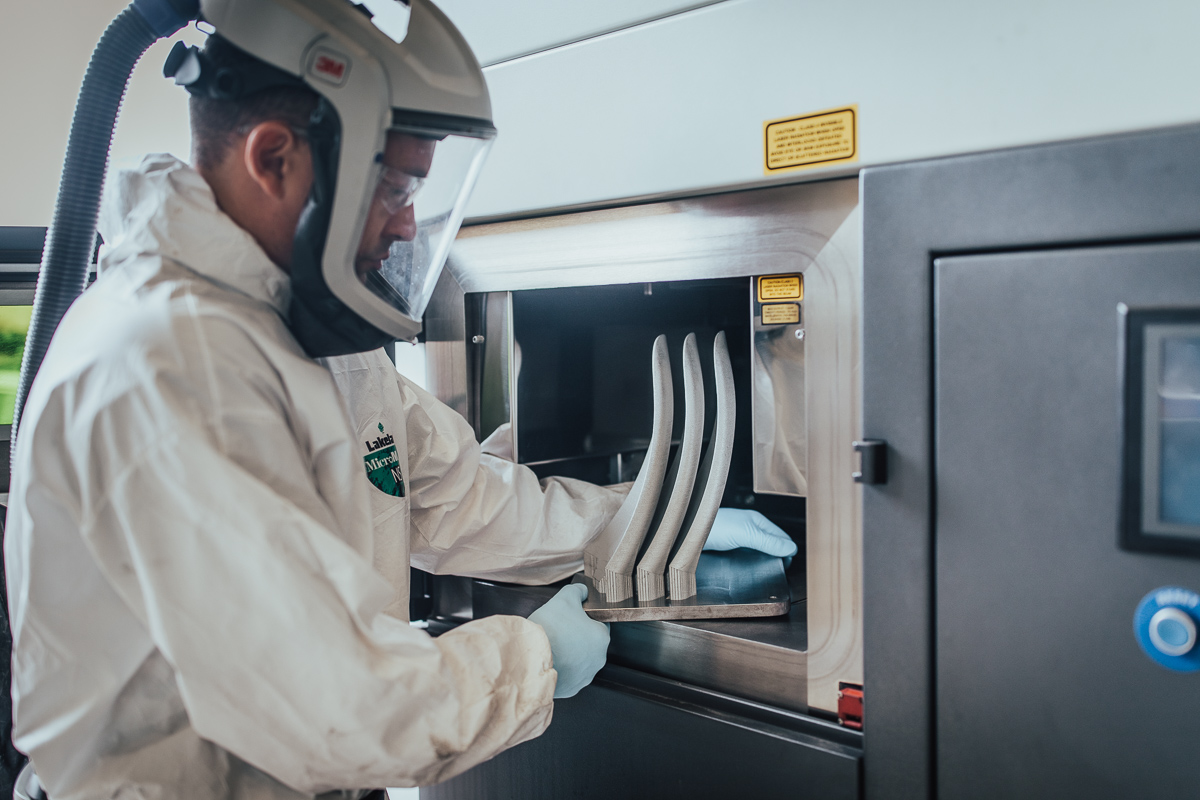
3D printing company Renishaw and Canada’s Nova Scotia Community College (NSCC) have jointly produced two ocean turbine parts using additive manufacturing (AM) for industrial design firm Biome Renewables.
Renishaw helped manufacture a PowerCone, a retrofit part that sits on the hub of an existing turbine, and propellers with a curved design. According to the companies, the PowderCone improves efficiency by 10-15% by letting the blades rotate at slower speeds, while the propellers can reduce drag when the blades turn in the water.
Using metal AM to produce these parts reportedly reduced costs by 80% and meant that two turbine components could be developed in two months.
‘Additive manufacturing allowed us to produce the final parts in two months, which would be unthinkable using traditional methods,’ said Mark Kirby, AM business manager at Renishaw Canada. ‘The ocean turbine project was not only a great opportunity for us to work with one of our many Canadian customers, it was a chance for us to see how metal AM can improve the efficiency of renewable sources.
This story uses material from Renishaw, with editorial changes made by Materials Today. The views expressed in this article do not necessarily represent those of Elsevier.






